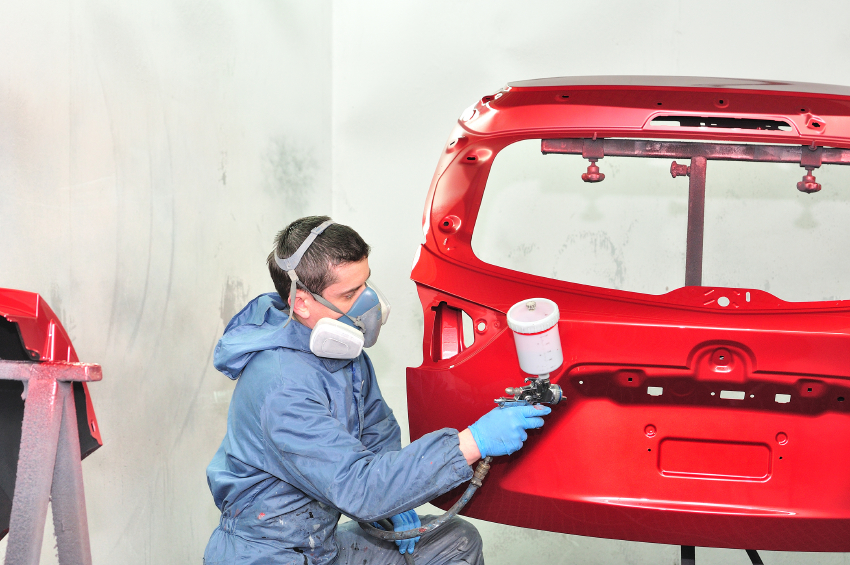Paint Guns: What You’ll Need To Know Before Starting Your Automotive Painting Career

Spray guns are used as the standard way of applying an even coat of paint to vehicle panels without having to worry about brush strokes affecting a car’s finished look. Because they consistently apply an even layer of paint to auto body surfaces, spray guns waste very little paint and offer auto painting experts an efficient way to get the job done.
In the world of auto body repair and automotive painting, professionals typically have three types of spray guns to choose from, each with its own set of advantages.
If you’re planning to enroll in an automotive painting program, read on for a closer look at some of the most common types of spray guns you will come across during your career.
Automotive Painting With Pressure-Feed Guns
Pressure-feed paint guns are quickly being replaced by more efficient paint systems. However, they are recommended for beginners to the automotive painting world, since they are relatively simple to use. As the name suggests, pressure is fed through and into the guns from an external source, such as a compressor or pressure tank.
When a user pulls the trigger of a pressure-feed paint gun, the paint is forced through a dip tube in the paint cup, sprayed outward through the nozzle, and air fed through the hose.
Siphon-Feed Spray Guns: The Low-Pressure Solution to Automotive Painting
With a siphon-feed system, the paint cup is located on the underside of the gun. Because of this, these systems need more compressed air pressure in order to get the paint up and out through the nozzle. There are usually holes in the paint cup lid to let air in, helping the paint get up the feed tube.
Siphon-feed spray guns usually have a lower pressure spray than other types, which makes them ideal for thinner liquids. Students enrolled in auto body schools will learn that these guns are great for applying a clear coat at the end of a paint job.
Gravity-Feed Spray Guns: Less Wasteful High-Pressure Automotive Painting
Gravity-feed spray gun systems are similar to siphon-feed ones, except that the paint cup is located on top of the gun. Because of this, paint entering the gun is assisted by gravity and so these guns utilize air pressure efficiently to create a spray. Since they use less air pressure, they also create much less overspray compared to other types of paint guns, making them less of a health hazard.
These guns are great for jobs that require thicker paint, or specialized paint jobs like metal flake finishes, for example.
Other Types of Spray Gun Technology Used in Automotive Painting
Aside from the most popular types mentioned above, there also a few other types of spray gun technologies worth mentioning, these include:
High-Pressure Low-Volume (HPLV) paint guns: These are conventional spray guns that are designed to deliver more paint with less air pressure. HPLV guns are great for efficiently covering larger surface areas, and are typically kept in shops for jobs like trucks and RV’s.
Low-Volume Low-Pressure (LVLP) paint guns: These use less air and operate at lower pressures. They still do an efficient job, and are convenient for smaller paint shops that don’t have room for a large compressor.
Airless spray guns: These use a particular nozzle that’s made with specialized pumps to get the paint out. These guns form larger paint droplets at the nozzle, and are ideal for bigger paint jobs or any job that may require a thicker coat of paint.

Why not take automotive painting courses at a school that’s dedicated ensuring all of its students begin successful careers in auto painting?
Visit ATC to learn more about our programs or to speak with an advisor.

